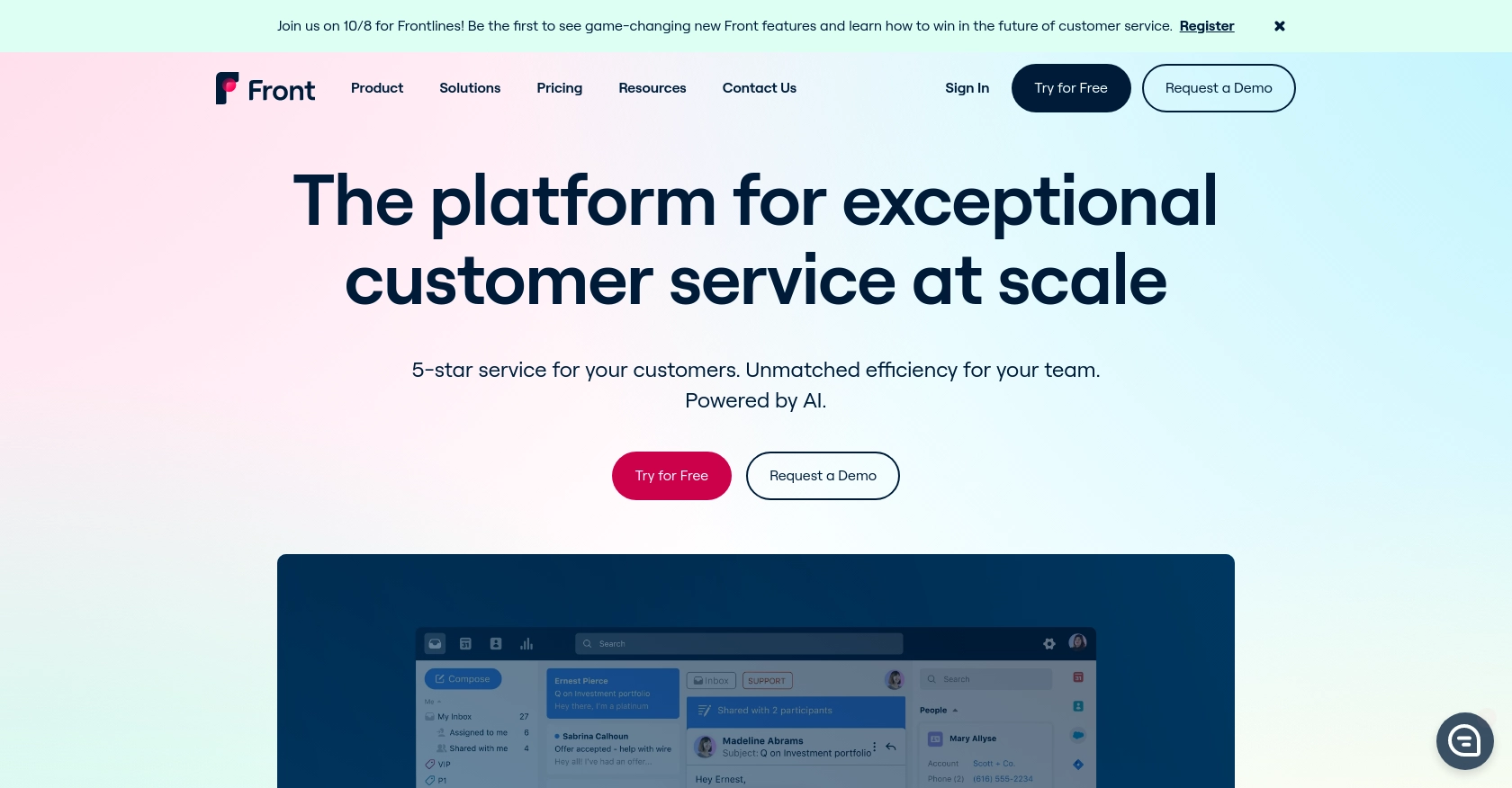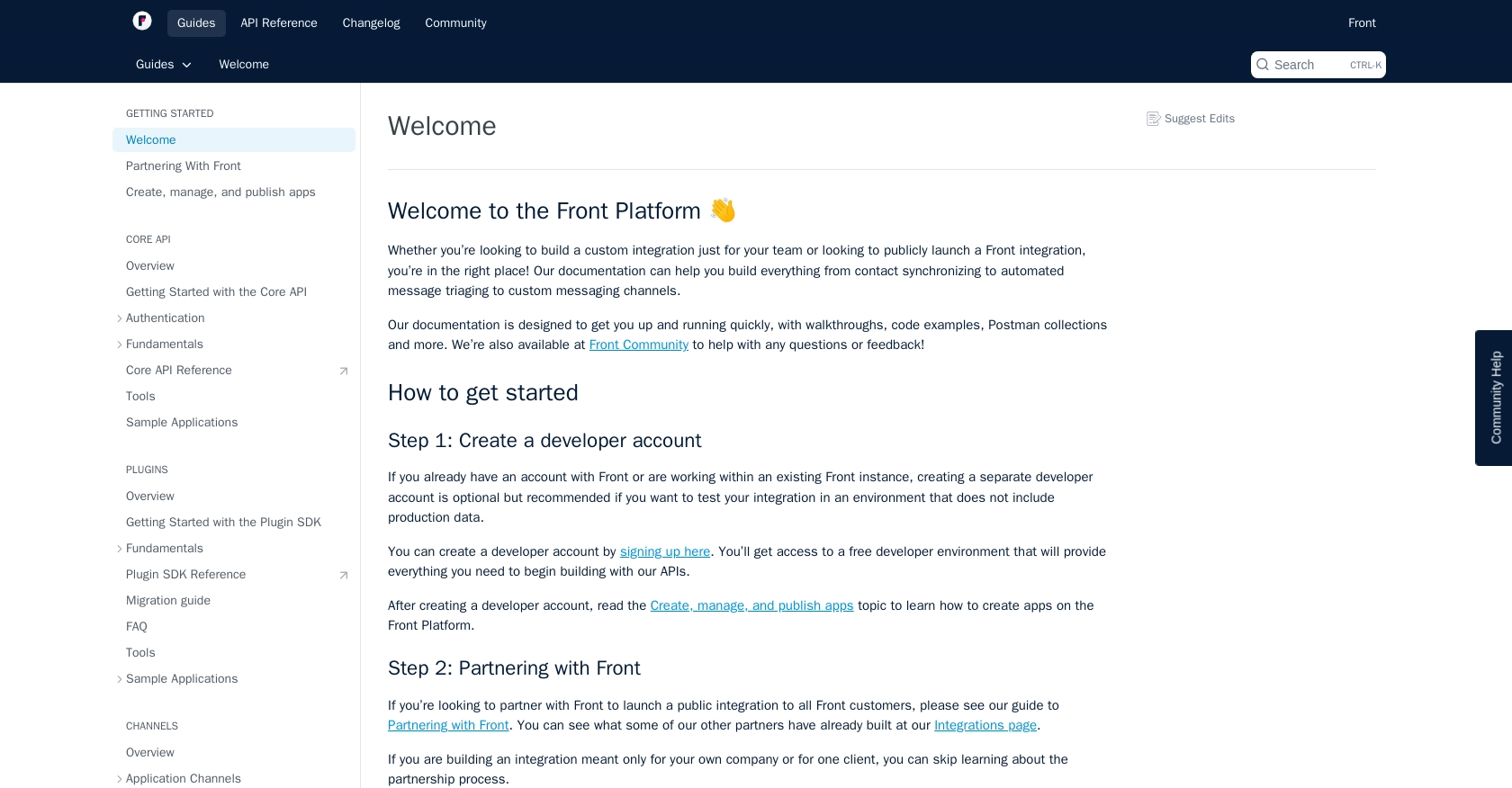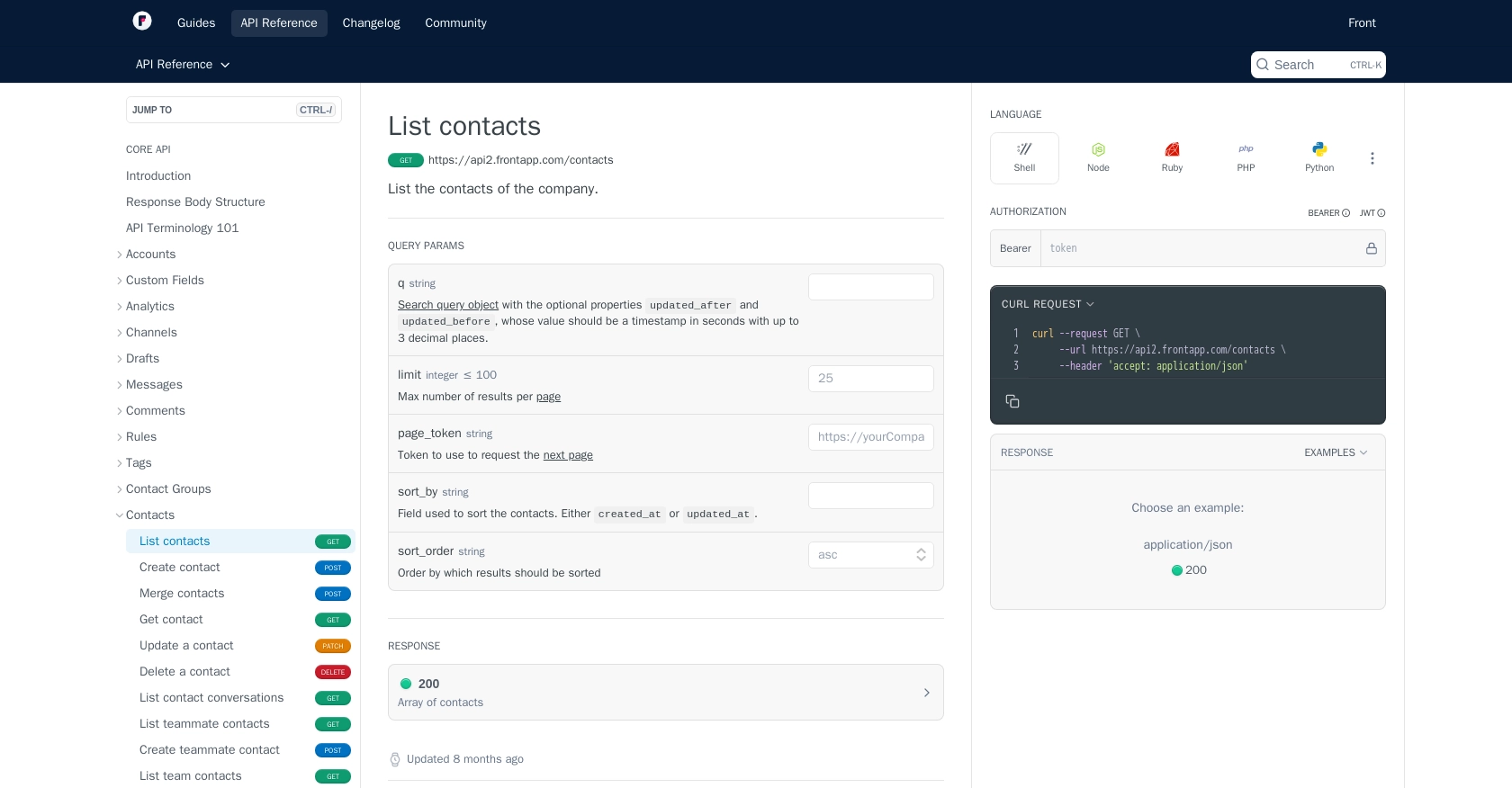Using the Front API to Get Contacts (with PHP examples)

Introduction to Front API for Contact Management
Front is a powerful communication hub that centralizes emails, messages, and other communication channels into a single platform. It is designed to enhance team collaboration and streamline customer interactions, making it a popular choice for businesses looking to improve their communication workflows.
Developers may want to integrate with Front's API to manage contact data efficiently. By leveraging the Front API, developers can automate the retrieval and synchronization of contact information, ensuring that teams have access to the most up-to-date customer data. For example, a developer might use the Front API to fetch contact details and integrate them into a CRM system, enhancing customer relationship management.
Setting Up Your Front Developer Account for API Integration
Before you can start using the Front API to manage contacts, you'll need to set up a developer account. This account will provide you with access to a sandbox environment where you can safely test your integrations without affecting production data.
Creating a Front Developer Account
If you don't already have a Front account, you can create a developer account by following these steps:
- Visit the Front Developer Portal.
- Click on the sign-up link to create a new account. This will grant you access to a free developer environment.
- Follow the on-screen instructions to complete the registration process.
Once your account is set up, you'll have access to all the tools and resources needed to begin building with the Front API.
Generating an API Token for Authentication
The Front API uses API tokens for authentication. Here's how you can generate an API token:
- Log in to your Front developer account.
- Navigate to the API tokens section in your account settings.
- Click on "Create API Token" and select "Shared Resources" for the scope.
- Copy the generated token and store it securely, as you'll need it to authenticate your API requests.
For more detailed instructions, refer to the Front API documentation.

sbb-itb-96038d7
Making API Calls to Retrieve Contacts Using Front API with PHP
To interact with the Front API and retrieve contact information, you'll need to use PHP to make HTTP requests. This section will guide you through the process of setting up your PHP environment, making API calls, and handling responses.
Setting Up Your PHP Environment for Front API Integration
Before making API calls, ensure you have the following prerequisites installed on your machine:
- PHP 7.4 or later
- Composer (PHP package manager)
You'll also need to install the Guzzle HTTP client, which simplifies making HTTP requests in PHP. Run the following command to install Guzzle:
composer require guzzlehttp/guzzleExample Code to Fetch Contacts from Front API
Once your environment is set up, you can use the following PHP code to retrieve contacts from the Front API:
require 'vendor/autoload.php';
use GuzzleHttp\Client;
$client = new Client();
$apiToken = 'YOUR_API_TOKEN'; // Replace with your actual API token
$response = $client->request('GET', 'https://api2.frontapp.com/contacts', [
'headers' => [
'Authorization' => 'Bearer ' . $apiToken,
'Accept' => 'application/json',
]
]);
if ($response->getStatusCode() === 200) {
$contacts = json_decode($response->getBody(), true);
foreach ($contacts['_results'] as $contact) {
echo 'Name: ' . $contact['name'] . "\n";
echo 'Email: ' . $contact['handles'][0]['handle'] . "\n\n";
}
} else {
echo 'Failed to retrieve contacts. Status code: ' . $response->getStatusCode();
}
Replace YOUR_API_TOKEN with the API token you generated earlier. This script uses Guzzle to send a GET request to the Front API's contacts endpoint. If successful, it will print out the names and emails of the contacts.
Handling API Responses and Errors
After executing the API call, it's crucial to handle the response correctly. Check the status code to verify the request's success. A status code of 200 indicates a successful retrieval, while other codes may indicate errors.
For error handling, consider implementing a try-catch block to manage exceptions and log errors for further investigation. This ensures your application can gracefully handle unexpected issues.
Verifying API Call Success in Front Sandbox
To confirm the success of your API call, log in to your Front sandbox account and navigate to the contacts section. You should see the contacts listed as returned by your API call. This verification step ensures that your integration is functioning correctly.
For more details on error codes and handling, refer to the Front API documentation.

Best Practices for Using Front API in PHP Integrations
When integrating with the Front API, it's essential to follow best practices to ensure secure and efficient interactions. Here are some recommendations:
- Securely Store API Tokens: Always store your API tokens securely, using environment variables or secure vaults, to prevent unauthorized access.
- Implement Rate Limiting: Be mindful of Front's rate limits, which start at 50 requests per minute. Implement logic to handle rate limit responses and use the
Retry-Afterheader to manage request pacing. For more details, refer to the Front API rate limiting documentation. - Handle Pagination: When retrieving large datasets, use pagination to manage data efficiently. Follow the pagination guidelines provided in the Front API pagination documentation.
- Error Handling: Implement robust error handling to manage exceptions and log errors for troubleshooting. This ensures your application can handle unexpected issues gracefully.
Transforming and Standardizing Data from Front API
When integrating data from the Front API into your systems, consider transforming and standardizing data fields to match your application's requirements. This might involve normalizing contact information or converting data formats to ensure consistency across platforms.
Streamlining Integrations with Endgrate
Building and maintaining multiple integrations can be time-consuming and complex. Endgrate simplifies this process by providing a unified API endpoint that connects to various platforms, including Front. By using Endgrate, you can:
- Save time and resources by outsourcing integrations, allowing your team to focus on core product development.
- Build once for each use case, reducing the need for multiple integrations.
- Offer an intuitive integration experience for your customers, enhancing user satisfaction.
Explore how Endgrate can streamline your integration efforts by visiting Endgrate.
Read More
Ready to get started?
